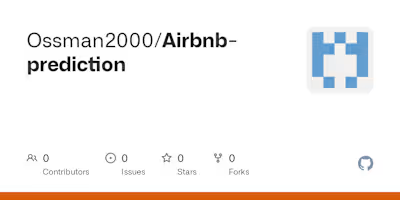Project: Investigate a Dataset - [Medical Appointment No Shows]
Latest commit
History
History
Table of Contents
In [1]:
# Use this cell to set up import statements for all of the packages that you
# plan to use
import pandas as pd
import numpy as py
import matplotlib.pyplot as plt
import seaborn as snb
# Remember to include a 'magic word' so that your visualizations are plotted
# inline with the notebook. See this page for more:
# http://ipython.readthedocs.io/en/stable/interactive/magics.html
%matplotlib inline
Upgrade pandas to use dataframe.explode() function.
!pip install --upgrade pandas==0.25.0
Data Wrangling
General Properties
In [2]:
# Load your data and print out a few lines. Perform operations to inspect data
# types and look for instances of missing or possibly errant data
import pandas as pd
df=pd.read_csv('noshowappointments-kagglev2-may-2016.csv')
df.head()
Out[2]:
PatientId AppointmentID Gender ScheduledDay AppointmentDay Age Neighbourhood Scholarship Hipertension Diabetes Alcoholism Handcap SMS_received No-show 0 2.987250e+13 5642903 F 2016-04-29T18:38:08Z 2016-04-29T00:00:00Z 62 JARDIM DA PENHA 0 1 0 0 0 0 No 1 5.589978e+14 5642503 M 2016-04-29T16:08:27Z 2016-04-29T00:00:00Z 56 JARDIM DA PENHA 0 0 0 0 0 0 No 2 4.262962e+12 5642549 F 2016-04-29T16:19:04Z 2016-04-29T00:00:00Z 62 MATA DA PRAIA 0 0 0 0 0 0 No 3 8.679512e+11 5642828 F 2016-04-29T17:29:31Z 2016-04-29T00:00:00Z 8 PONTAL DE CAMBURI 0 0 0 0 0 0 No 4 8.841186e+12 5642494 F 2016-04-29T16:07:23Z 2016-04-29T00:00:00Z 56 JARDIM DA PENHA 0 1 1 0 0 0 No
In [3]:
#explore the shape of data
df.shape
Out[3]:
(110527, 14)
In [4]:
#check for dublicates
df.duplicated().sum()
Out[4]:
0
In [5]:
# check if there is a patiennts with the same id
df['PatientId'].duplicated().sum()
Out[5]:
48228
In [6]:
#check number of dublicated patients Ids and no show
#to check ifthere were patients Ids duplicates but differ in the no show status
df.duplicated(['PatientId','No-show']).sum()
Out[6]:
38710
In [ ]:
In [7]:
df.describe()
Out[7]:
PatientId AppointmentID Age Scholarship Hipertension Diabetes Alcoholism Handcap SMS_received count 1.105270e+05 1.105270e+05 110527.000000 110527.000000 110527.000000 110527.000000 110527.000000 110527.000000 110527.000000 mean 1.474963e+14 5.675305e+06 37.088874 0.098266 0.197246 0.071865 0.030400 0.022248 0.321026 std 2.560949e+14 7.129575e+04 23.110205 0.297675 0.397921 0.258265 0.171686 0.161543 0.466873 min 3.921784e+04 5.030230e+06 -1.000000 0.000000 0.000000 0.000000 0.000000 0.000000 0.000000 25% 4.172614e+12 5.640286e+06 18.000000 0.000000 0.000000 0.000000 0.000000 0.000000 0.000000 50% 3.173184e+13 5.680573e+06 37.000000 0.000000 0.000000 0.000000 0.000000 0.000000 0.000000 75% 9.439172e+13 5.725524e+06 55.000000 0.000000 0.000000 0.000000 0.000000 0.000000 1.000000 max 9.999816e+14 5.790484e+06 115.000000 1.000000 1.000000 1.000000 1.000000 4.000000 1.000000
In [8]:
#identifiying the row index for the age -1
mask=df.query('Age=="-1"')
mask
Out[8]:
PatientId AppointmentID Gender ScheduledDay AppointmentDay Age Neighbourhood Scholarship Hipertension Diabetes Alcoholism Handcap SMS_received No-show 99832 4.659432e+14 5775010 F 2016-06-06T08:58:13Z 2016-06-06T00:00:00Z -1 ROMÃO 0 0 0 0 0 0 No
In [9]:
### Data Cleaning
In [10]:
#removing the value -1
df.drop(index=99832,inplace=True)
In [11]:
df.describe()
Out[11]:
PatientId AppointmentID Age Scholarship Hipertension Diabetes Alcoholism Handcap SMS_received count 1.105260e+05 1.105260e+05 110526.000000 110526.000000 110526.000000 110526.000000 110526.000000 110526.000000 110526.000000 mean 1.474934e+14 5.675304e+06 37.089219 0.098266 0.197248 0.071865 0.030400 0.022248 0.321029 std 2.560943e+14 7.129544e+04 23.110026 0.297676 0.397923 0.258266 0.171686 0.161543 0.466874 min 3.921784e+04 5.030230e+06 0.000000 0.000000 0.000000 0.000000 0.000000 0.000000 0.000000 25% 4.172536e+12 5.640285e+06 18.000000 0.000000 0.000000 0.000000 0.000000 0.000000 0.000000 50% 3.173184e+13 5.680572e+06 37.000000 0.000000 0.000000 0.000000 0.000000 0.000000 0.000000 75% 9.438963e+13 5.725523e+06 55.000000 0.000000 0.000000 0.000000 0.000000 0.000000 1.000000 max 9.999816e+14 5.790484e+06 115.000000 1.000000 1.000000 1.000000 1.000000 4.000000 1.000000
In [12]:
#corrections of columns names
df.rename(columns={'Hipertension':'Hypertension'},inplace = True)
df.rename(columns={'No-show':'No_show'},inplace = True )
df.head()
Out[12]:
PatientId AppointmentID Gender ScheduledDay AppointmentDay Age Neighbourhood Scholarship Hypertension Diabetes Alcoholism Handcap SMS_received No_show 0 2.987250e+13 5642903 F 2016-04-29T18:38:08Z 2016-04-29T00:00:00Z 62 JARDIM DA PENHA 0 1 0 0 0 0 No 1 5.589978e+14 5642503 M 2016-04-29T16:08:27Z 2016-04-29T00:00:00Z 56 JARDIM DA PENHA 0 0 0 0 0 0 No 2 4.262962e+12 5642549 F 2016-04-29T16:19:04Z 2016-04-29T00:00:00Z 62 MATA DA PRAIA 0 0 0 0 0 0 No 3 8.679512e+11 5642828 F 2016-04-29T17:29:31Z 2016-04-29T00:00:00Z 8 PONTAL DE CAMBURI 0 0 0 0 0 0 No 4 8.841186e+12 5642494 F 2016-04-29T16:07:23Z 2016-04-29T00:00:00Z 56 JARDIM DA PENHA 0 1 1 0 0 0 No
In [13]:
#removing dublictaes Ids with duplicated showing statues ,leaving the dublicated id if they differ in showing statues
#as the same patient may have several appointments
df.drop_duplicates(['PatientId','No_show'],inplace=True)
df.shape
Out[13]:
(71816, 14)
In [14]:
#removing un necessary data
df.drop(['PatientId','AppointmentID','ScheduledDay','AppointmentDay'],axis=1,inplace=True)
df.head()
Out[14]:
Gender Age Neighbourhood Scholarship Hypertension Diabetes Alcoholism Handcap SMS_received No_show 0 F 62 JARDIM DA PENHA 0 1 0 0 0 0 No 1 M 56 JARDIM DA PENHA 0 0 0 0 0 0 No 2 F 62 MATA DA PRAIA 0 0 0 0 0 0 No 3 F 8 PONTAL DE CAMBURI 0 0 0 0 0 0 No 4 F 56 JARDIM DA PENHA 0 1 1 0 0 0 No
In [15]:
df.describe()
Out[15]:
Age Scholarship Hypertension Diabetes Alcoholism Handcap SMS_received count 71816.000000 71816.000000 71816.000000 71816.000000 71816.000000 71816.000000 71816.000000 mean 36.527501 0.095536 0.195068 0.070959 0.025036 0.020135 0.335566 std 23.378262 0.293956 0.396256 0.256758 0.156236 0.155338 0.472191 min 0.000000 0.000000 0.000000 0.000000 0.000000 0.000000 0.000000 25% 17.000000 0.000000 0.000000 0.000000 0.000000 0.000000 0.000000 50% 36.000000 0.000000 0.000000 0.000000 0.000000 0.000000 0.000000 75% 55.000000 0.000000 0.000000 0.000000 0.000000 0.000000 1.000000 max 115.000000 1.000000 1.000000 1.000000 1.000000 4.000000 1.000000
Exploratory Data Analysis
Research Question 1 (explore data and more information and take ageneral look)
In [16]:
df.hist(figsize=(16,6.5));
In [17]:
#dividing the patients into 2 groups according to showning or not the exploring them
show=df.No_show=='No'
noshow=df.No_show=='Yes'
df[show].count(),df[noshow].count()
Out[17]:
(Gender 54153
Age 54153
Neighbourhood 54153
Scholarship 54153
Hypertension 54153
Diabetes 54153
Alcoholism 54153
Handcap 54153
SMS_received 54153
No_show 54153
dtype: int64, Gender 17663
Age 17663
Neighbourhood 17663
Scholarship 17663
Hypertension 17663
Diabetes 17663
Alcoholism 17663
Handcap 17663
SMS_received 17663
No_show 17663
dtype: int64)
In [18]:
df[show].mean(),df[noshow].mean()
Out[18]:
(Age 37.229166
Scholarship 0.091334
Hypertension 0.202944
Diabetes 0.072868
Alcoholism 0.023600
Handcap 0.020904
SMS_received 0.297232
dtype: float64, Age 34.376267
Scholarship 0.108419
Hypertension 0.170922
Diabetes 0.065108
Alcoholism 0.029440
Handcap 0.017777
SMS_received 0.453094
dtype: float64)
investigation for the factors that effect the attendace
In [19]:
plt.figure(figsize=[16,4])
df[show].groupby(['Hypertension','Diabetes']).mean()['Age'].plot(kind='bar',color='blue',label='show')
df[noshow].groupby(['Hypertension','Diabetes']).mean()['Age'].plot(kind='bar',color='red',label='noshow')
plt.legend();
plt.title('comparison acc.to chronic disesase')
plt.xlabel('chronic disease')
plt.ylabel('Mean age');
In [20]:
df[show].groupby(['Hypertension','Diabetes']).mean()['Age'],df[noshow].groupby(['Hypertension','Diabetes']).mean()['Age']
Out[20]:
(Hypertension Diabetes
0 0 30.713360
1 53.701370
1 0 60.270517
1 63.764303
Name: Age, dtype: float64, Hypertension Diabetes
0 0 28.768691
1 49.481172
1 0 58.650380
1 62.913282
Name: Age, dtype: float64)
In [21]:
def attendance (df,col_name,attended,absent):
plt.figure(figsize=[18,3])
df[col_name][show].hist(alpha=.5,bins=10,color='blue',label='show')
df[col_name][noshow].hist(alpha=.5,bins=10,color='red',label='noshow')
plt.legend();
plt.title('comparison acc.to age')
plt.xlabel('Age')
plt.ylabel('Patients Number');
attendance(df,'Age',show,noshow)
In [22]:
#what is the percentage of male and female
def attendance (df,col_name,attended,absent):
plt.figure(figsize=[12,4])
df[col_name][show].value_counts(normalize=True).plot(kind='pie',label='show')
plt.legend();
plt.title('comparison acc.to gender')
plt.xlabel('Gender')
plt.ylabel('Patients Number');
attendance(df,'Gender',show,noshow)
In [23]:
#does age and chornic disease affect attendance to gether
plt.figure(figsize=[12,4])
df[show].groupby('Gender').Age.mean().plot(kind='bar',color='blue',label='show')
df[noshow].groupby('Gender').Age.mean().plot(kind='bar',color='red',label='noshow')
plt.legend();
plt.title('comparison acc.to age and chronic disesase')
plt.xlabel('GENDER')
plt.ylabel('Mean age');
In [24]:
print(df[show].groupby(['Gender']).Age.mean(),df[noshow].groupby('Gender').Age.mean(),
df[show].groupby(['Gender']).Age.median(),df[noshow].groupby('Gender').Age.median() )
Gender
F 39.130292
M 33.766269
Name: Age, dtype: float64 Gender
F 36.06501
M 31.22040
Name: Age, dtype: float64 Gender
F 39
M 32
Name: Age, dtype: int64 Gender
F 34
M 29
Name: Age, dtype: int64
there is no correlation bet. age and gender affect the show rate the mean and the median almost the same
In [25]:
#does receving sms affect the attendance
def attendance (df,col_name,attended,absent):
plt.figure(figsize=[16,4])
df[col_name][show].hist(alpha=.5,bins=10,color='blue',label='show')
df[col_name][noshow].hist(alpha=.5,bins=10,color='red',label='noshow')
plt.legend();
plt.title('comparison acc.to reciving SMS')
plt.xlabel('SMS')
plt.ylabel('Patients Number');
attendance(df,'SMS_received',show,noshow)
number of showig patients whithout receiving sms is greater than showing patients with receving sms
In [26]:
# Continue to explore the data to address your additional research
# questions. Add more headers as needed if you have more questions to
# investigate.
does nighbourhood affect the attendance
In [27]:
plt.figure(figsize=[14,8])
df.Neighbourhood[show].value_counts().plot(kind='bar',color='blue',label='show')
df.Neighbourhood[noshow].value_counts().plot(kind='bar',color='red',label='noshow')
plt.legend();
plt.title('comparison acc.to neighbourhood')
plt.xlabel('Neighbourhood')
plt.ylabel('Patients Number');
sms has response in only 5 neighbourhoods
In [32]:
plt.figure(figsize=[18,3])
df[show].groupby('Neighbourhood').SMS_received.mean().plot(kind='bar',color='blue',label='show')
df[noshow].groupby('Neighbourhood').SMS_received.mean().plot(kind='bar',color='red',label='noshow')
plt.legend();
plt.title('comparison acc.to neighbourhood,SMS')
plt.xlabel('Neighbourhood')
plt.ylabel('Patients Number');
sms has response in only 5 neighbourhoods ,ILHAS OCEANICAS DE TRINDADE is the most responsive to the sms
In [31]:
plt.figure(figsize=[18,3])
df[show].groupby('Neighbourhood').Age.mean().plot(kind='bar',color='blue',label='show')
df[noshow].groupby('Neighbourhood').Age.mean().plot(kind='bar',color='red',label='noshow')
plt.legend();
plt.title('comparison acc.to neighbourhood,SMS')
plt.xlabel('Neighbourhood')
plt.ylabel('Mean Age');
patients attendance from specific neighbourhood differ according to ages AEROPORTO has the highest age attend
Conclusions
neighbourhood has a great effect on attendance , JARDIM CAMBURI has the greatest number of patients and also the greatest showing rate
number of showing patients from specific neighbourhood affected by receiving sms and age
number of showing patients without receiving sms is greater than showing with receiving sms
Limitations
no clear correlation between showing and gender, chornic disease
Submitting your Project
Like this project
Posted Aug 18, 2023
Dataset Description we have a csv file contain data which we downloaded(no shoes appointment) - InvestigateaDataset/Investigate_a_Dataset.ipynb at main · Ossm…





